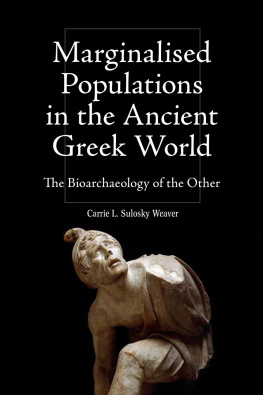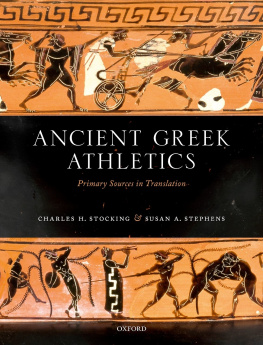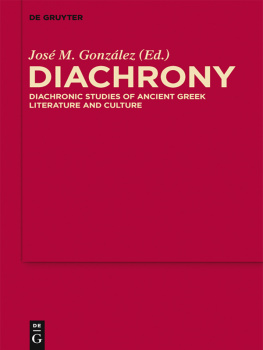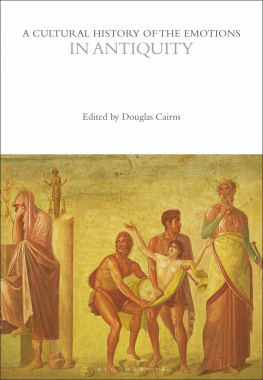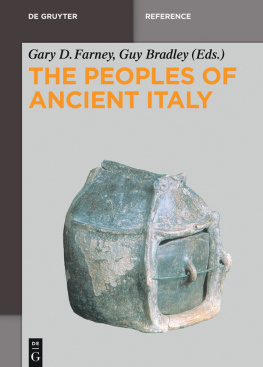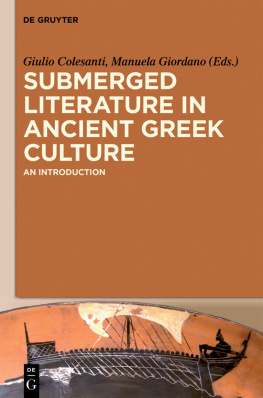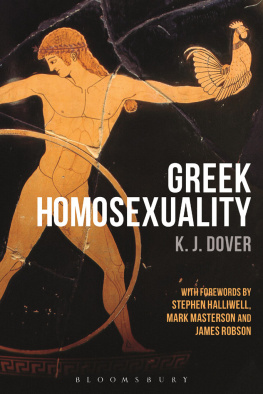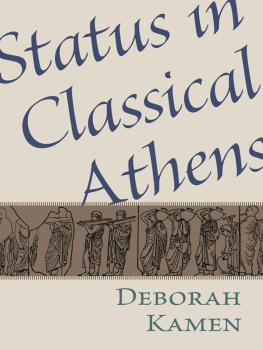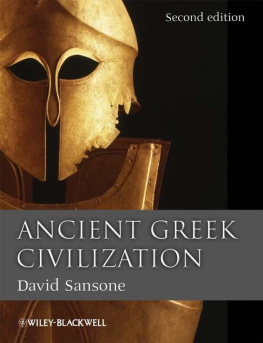
Marginalised Populations in the Ancient Greek World
Intersectionality in Classical Antiquity
Series Editors: Mark Masterson, Victoria University of Wellington, Fiona McHardy, University of Roehampton and Nancy Sorkin Rabinowitz, Hamilton College
This series focuses on the intersection of gender and sexuality, in the Greco-Roman world, with a range of other factors including race, ethnicity, class, ability, masculinity, femininity, transgender and post-colonial gender studies. The books in the series will be theoretically informed and will sit at the forefront of the study of a variety of outsiders those marginalised in relation to the classical ideal and how they were differently constructed in the ancient world. The series is also interested in the ways in which work in the field of classical reception contributes to that study.
Editorial Advisory Board
Patty Baker, Alastair Blanshard, Susan Deacy, Jacqueline Fabre-Serris, Cristiana Franco, Genevieve Liveley, Mark Masterson, Amy Richlin, Carisa R. Showden
Books available in the series
Exploring Gender Diversity in the Ancient World, edited by Allison Surtees and Jennifer Dyer
Women in the Law Courts of Classical Athens, Konstantinos Kapparis
Marginalised Populations in the Ancient Greek World: The Bioarchaeology of the Other, Carrie L. Sulosky Weaver
Visit the series web page at: edinburghuniversitypress.com/series-intersectionality-in-classical-antiquity
Marginalised Populations in the Ancient Greek World
The Bioarchaeology of the Other
Carrie L. Sulosky Weaver
EDINBURGH
University Press
Edinburgh University Press is one of the leading university presses in the UK. We publish academic books and journals in our selected subject areas across the humanities and social sciences, combining cutting-edge scholarship with high editorial and production values to produce academic works of lasting importance. For more information visit our website: edinburghuniversitypress.com
Carrie L. Sulosky Weaver, 2022
Cover image: The Defeated Barbarian. Roma sculpture after Greek original.
From the Acropolis in Athens. Dim.: 64 x 71 x 37 cm. Photo: White Images/Scala/Art Resource, NY.
Cover design: www.richardbudddesign.co.uk
Grateful acknowledgment is made to the sources listed in the List of Illustrations for permission to reproduce material previously published elsewhere. Every effort has been made to trace the copyright holders, but if any have been inadvertently overlooked, the publisher will be pleased to make the necessary arrangements at the first opportunity.
Edinburgh University Press Ltd
The Tun Holyrood Road
12(2f) Jacksons Entry
Edinburgh EH8 8PJ
Typeset in 11/13 Adobe Garamond by
IDSUK (DataConnection) Ltd, and
printed and bound in Great Britain.
A CIP record for this book is available from the British Library
ISBN 978 1 4744 1525 5 (hardback)
ISBN 978 1 4744 1526 2 (webready PDF)
ISBN 978 1 4744 1527 9 (epub)
The right of Carrie L. Sulosky Weaver to be identified as the author of this work has been asserted in accordance with the Copyright, Designs and Patents Act 1988, and the Copyright and Related Rights Regulations 2003 (SI No. 2498).
Contents
Figures
Map depicting the Aegean sites mentioned in the text.
Map depicting the eastern and southern sites mentioned in the text.
Map depicting the western sites mentioned in the text.
Diagram of the human skeleton.
Attic black-figure amphora (ca. 520 BCE ) by the Antimenes Painter from Athens, Greece depicting a scene of olive-gathering.
Attic red-figure kylix (ca. 490480 BCE ) by the Foundry Painter from Vulci, Italy depicting craftsmen in a bronze foundry.
Attic red-figure kylix (ca. 440430 BCE ) by the Codrus Painter from Tarquinia, Italy depicting the birth of Erechtheus.
Stele of Hegeso (ca. 400 BCE ) from Athens, Greece.
Map of Greek colonisation of the Mediterranean.
Attic red-figure pelike (ca. 460 BCE ) from Thespiae, Greece by the Pan Painter depicting Heracles battling Busiris and his priests.
Detail of an Attic red-figure Nolan amphora (ca. 450440 BCE ) from Attica attributed to the Phiale Painter, depicting a Thracian woman with V-shaped arm tattoos attacking Orpheus with a sword.
Attic red-figure pelike (ca. 450440 BCE ) from the Workshop of the Niobid Painter depicting Andromeda tied to a stake by enslaved individuals.
The Dying Gaul, a Roman marble copy of a Hellenistic Greek bronze original (Pergamum, ca. 230220 BCE ) attributed to Epigonus.
The Gallic Chieftain and His Wife, Roman marble copy of a Hellenistic Greek bronze original (Pergamum, ca. 230220 BCE ) attributed to Epigonus.
Black-figure hydria (Ionic-Greek, ca. 525 BCE ) from Caere, Italy depicting the return of Hephaestus to Olympus.
Corinthian alabastron (ca. 625600 BCE ) by the La Trobe Painter depicting two komast dancers.
Diagram of different fracture types.
Attic red-figure skyphos (fifth century BCE ) in the manner of the Sotades Painter from Capua, Italy depicting a nude person with dwarfism crouching.
Extant skeletal remains of a presumed person with pituitary dwarfism (T883) from the Passo Marinaro necropolis (ca. fifth to third century BCE ) at Kamarina, Sicily.
Red unvarnished ware Attic rhyton (ca. 560550 BCE ) by Sotades (potter) from Ruvo, Italy in the form of a pygmy carrying a dead crane.
Marble bust of a person with a curved spine (ca. second century CE ) from Rome.
Hellenistic ivory figure of a person with a curved spine made in Alexandria, Egypt (ca. first century BCE ).
Diagram of various types of craniosynostosis.
Roman marble copy (ca. second century BCE ) from Tivoli, Italy of an earlier Greek portrait bust of Pericles (died ca. 429 BCE ).
Tondo of an Attic red-figure kylix (ca. 450 BCE ) attributed to the Painter of Bologna 417 from Vulci, Italy depicting Aesop(?) conversing with a fox.
Craniosynostosis in T413 from the Passo Marinaro necropolis (ca. fifth to third century BCE ) at Kamarina, Sicily.
Craniosynostosis in T539 from the Passo Marinaro necropolis (ca. fifth to third century BCE ) at Kamarina, Sicily.
Hellenistic marble sculpture of Hermaphroditus (Pergamum, third century BCE ).
Frontal view of the Sleeping Hermaphroditus from Rome, Italy. Roman marble copy of a Hellenistic Greek original (ca. second century BCE) .
Rear view of the Sleeping Hermaphroditus from Rome, Italy. Roman marble copy of a Hellenistic Greek original (ca. second century BCE) .
Detail of a relief from the main temple of Ramses III (r. 11931162 BCE ), outside the temple walls, at Medinet Habu, Thebes.
Cenotaph of Dexileos (ca. 390 BCE ) from Athens, Greece.
Acknowledgments
I owe my sincerest thanks to a number of people for their generous assistance and support throughout the challenging course of this project. First and foremost, I am grateful to the staff of Edinburgh University Press, particularly Senior Commissioning Editor Carol Macdonald, as well as Mark Masterson, Fiona McHardy and Nancy Sorkin Rabinowitz, the editors of the Intersectionality in Classical Antiquity series, and the reviewers of my book proposal and manuscript, all of whom have played crucial roles in the development of this book.
It is my distinct pleasure to acknowledge the assistance of scholars who contributed to the improvement of my manuscript. I owe a tremendous debt to Rebecca Futo Kennedy and Britney Kyle. Their fastidious scholarship provided a firm foundation for my understanding many of the issues addressed here, and their keen editorial eyes and sound advice shaped the final form of this book. I am thankful to Anagnostis Agelarakis, Alexandra Alexandridou, Geoff Bakewell, Anastasia Dakouri-Hild, Christopher Knsel, Britney Kyle, Anna Lagia, Mandc Miles, Ian Morris, Christina Papageorgopoulou and Efrossini Vika for sending me digital offprints of their work and patiently answering any questions I posed to them. Special thanks are owed to Peter Papadakos, who translated skeletal reports from modern Greek to English, and Marcie Persyn, who tracked down and translated some ambiguous ancient Greek fragments. I am also grateful to Tyler Jo Smith and Renee M. Gondek for their constructive comments on various parts of the manuscript, and to Alana Dunn, who aided with the editing of the bibliography.
Next page
